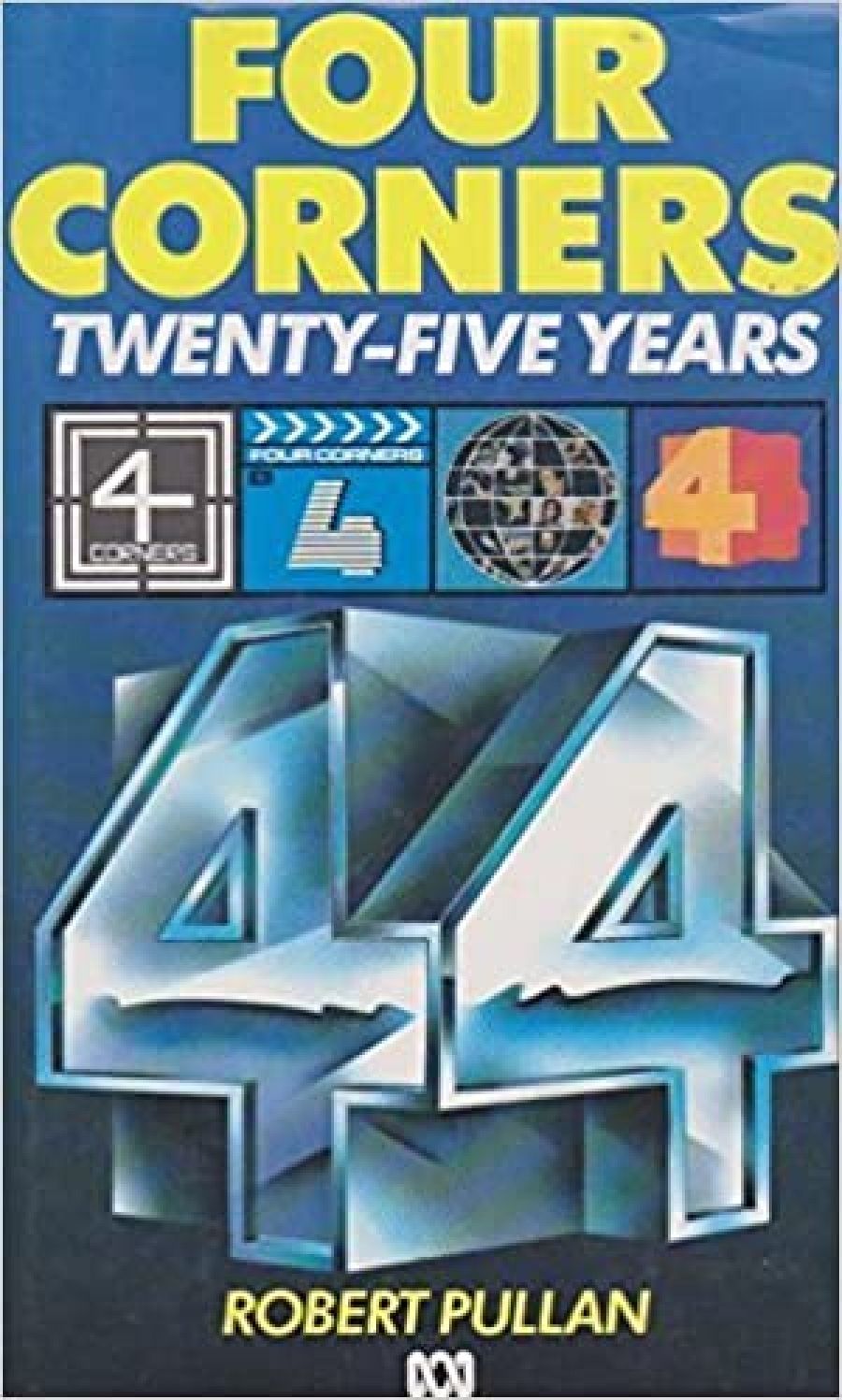
- Free Article: No
- Contents Category: Television
- Review Article: Yes
- Article Title: Stories from Four Corners
- Online Only: No
- Custom Highlight Text:
When Four Corners began on ABC television in 1961 there was little to break what Humphrey McQueen, following Manning Clark, has called the ‘Great Australian Silence’. True, the Sydney fortnightly magazine Nation had started in 1958; but there was little else to offer a toughminded or oppositional outlook on the orthodoxies and consensus that was Australia. So Four Corners was badly needed. In turn it and Nation were joined by others: Oz magazine and the televised Mavis Bramston Show in 1963; The Australian in 1964 and This Day Tonight.
- Book 1 Title: Four Corners: Twenty-five years
- Book 1 Biblio: ABC Enterprises, 162 pp, $24.95 hb
Of all those ventures, only Four Corners survives (The Australian having shifted right over ten years ago). Yet today, it exists in an environment far healthier for current affairs and investigative journalism. Robert Pullan’s book is a useful reminder of the good work Four Corners has continued to do in recent years. ‘No one program,’ he writes, ‘has the power by itself to widen the agenda of public debate, but it seemed to me that Four Corners had been on the cutting edge of these major changes (in Australian society)’. He documents recent programs on Aboriginals, on the blowing up of the Rainbow Warrior, the nuclear industry, corruption in NSW politics and the courts on mining and the environment, an early program on AIDS, and many others.
Pullan’s book is structured around a series of anecdotes about these and many other programs that stretch across the twenty-five years of Four Corners’s existence. The heroes are the different reporters, producers, and compères who have held the show together. Management has been cautious at the best of times, sometimes obstructionist. The foe, more often than not, is the powerful – a politician, a company, a lobby group. The story has usually gone to air but the powerful can still eke their own revenge. In the old days, it would be the removal of an Allan Ashbolt to another part of the ABC. Nowadays it is a court action for libel by Comalco that cost the ABC $2 million.
The book is instructive and interesting to read. Basically Pullan holds the same left liberal view of Four Corners and the ABC as Ken Inglis in his monumental This is the ABC (1983). Pullan’s book represents a picking out of some of the many threads in Inglis and then a filling-out of these. However, the book has no index, which would have made it more useful than it is. I would have also welcomed rather more production information about the program, then and now. Some does creep in, but this tends to be incidental. More could have helped to suggest why Four Corners is the way it is.
Finally, the puzzle of whom the book is for. Produced by ABC merchandising, the book has a handsome dustjacket, large print, good quality paper, and crisp pleasing pictures of its heroes (but no off-air stills). Twenty-five dollars is a rather high price for less than forty thousand words. I can’t help suspecting that Four Corners viewers would still prefer something a bit meatier and tougher to chew on.


Comments powered by CComment